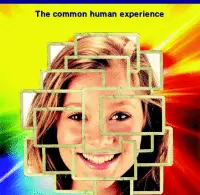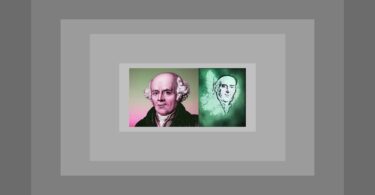In the long-running discussions over whether the newer practices and experimental methods have value and whether they are really homoeopathy, I’ve seen little distinction drawn between, on the one hand, the limits of how Hahnemann would have practised homoeopathy, and, on the other, what Hahnemann’s definition would encompass.
There is, of course, a world of difference.
It’s pointed out often that had Hahnemann lived longer, we would now have further editions of the Organon, recommending even better ways to practise something that he calls homoeopathy. In this way, the practice of homoeopathy would have advanced.
But, in that case, what is homoeopathy? Does the answer to that question depend on the last available edition of the Organon? Is it subject to anybody’s latest findings, even Hahnemann’s? Is it subject to negotiation?
Inflammatory debate arising from disagreement over terms is easy to avoid, if participants agree to one simple basis for terminology: to use a word only in such a way that all can agree is accurate.
As we know, Hahnemann himself altered his practice of homoeopathy from edition to edition of the Organon, constantly improving it through rigorous experimentation. This suggests that homoeopathic practice may enjoy all kinds of variety, even beyond Hahnmann’s experiments. And, though certain things remained constant in his practice, speculation naturally arises of what new practices Hahnemann might have developed in time, and the limits beyond which he would have acknowledged his own development of a new therapy: not homoeopathy; something else.
There must be a line, a definition of homoeopathy, beyond which lies a world of other practices, none of which are homoeopathy. How do we identify that line?
Let Hahnemann himself answer this question.
“To cure mildly, rapidly, certainly, and permanently, choose, in every case of disease, a medicine which can itself produce an affection similar (??????? ?????) to that sought to be cured!”
– Introduction, Organon, 6th ed.
“Whichever of these medicines that have been investigated as to their power of altering man’s health we find to contain in the symptoms observed from its use the greatest similarity to the totality of the symptoms of a given natural disease, this medicine will and must be the most suitable, the most certain homoeopathic remedy for the disease; in it is found the specific remedy of this case of disease.”
– Aph. 147, Organon, 6th ed.
In other words, the homoeopathic remedy is that remedy whose observed power to alter health includes those symptoms most similar to the totality of the patient’s symptoms; and homoeopathy is the practice of using that remedy.
(Other parts of the Organon dispel all doubt as to the necessity to prove each medicine and to do so on healthy volunteers, and the necessity to prescribe a single medicine, unmixed with others, but I assume that nobody in an informed discussion will contend otherwise.)
The only definition of homoeopathy with which nobody can disagree is Hahnemann’s. Having defined it, Hahnemann himself set the bounds beyond which a practice may not be called homoeopathic.
What we have, then, as the basis for an informed and constructive discussion is an unchanging definition of homoeopathy that allows for infinite variation in the way in which it is practised within specific limits. Those limits include the use of one unmixed medicine, proven, prescribed on the basis of greatest similarity in its proving symptoms to the totality of the patient’s symptoms.
Hahnemann himself is the first to acknowledge that innovation holds potential for improvement, and that homoeopathy is not the be-all and end-all of healing. In the last aphorisms of the Organon, he endorsed a number of therapeutic measures that are distinctly and unarguably unhomoeopathic. So to be discriminating in our use of words does not mean to discriminate against what is not, according to Hahnemann’s definition of it, homoeopathy. Rather, it enables discussion of innovations from homoeopathy to occur without the rancour that usually arises at misuse of a term whose meaning Hahnemann could hardly have made clearer.
An additional benefit arises from giving methods their own name that fall outside the definition of homoeopathy: whichever methods perform best will not be saddled with the less illustrious history of the remaining ones. If methods that involve meditations or interpolation, dowsing or kinesiology, and psychoanalysis or sympathetic magic rather than provings, case-taking, and materia medica prove superior to homoeopathy, they will acquire a recognition of their efficacies that remains clear of confusion with the method that Hahnemann defined.
Naturally, though, the obverse is also true: homoeopathy’s reputation in scientific circles – already rocky due to the conceptual difficulty of potencies – will not suffer additionally by association with practices eventually shown to be wanting.
The confusion that has beset previous attempts to have this discussion need not plague this one, if the participants in the conversation use terms to denote only what is unarguable. In relation to the term “homoeopathy”, that means the meaning that Hahnemann gave it, against which nobody is in a position to argue.
Any other use of the word will understandably inflame and obstruct discussion in the usual way.
——————————————
John Harvey is a writer and editor. He lives in Canberra, where he has studied and practised homeopathy since 1976.
— —





